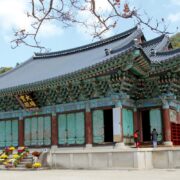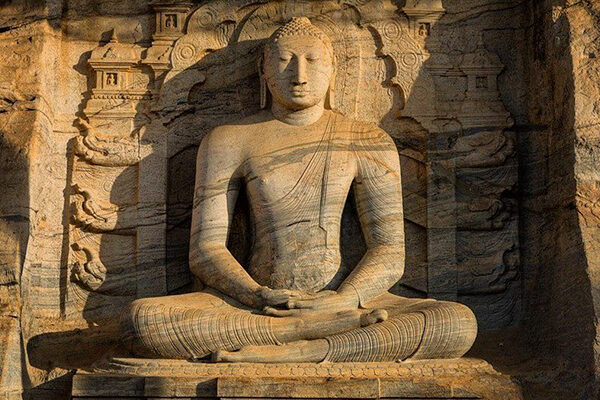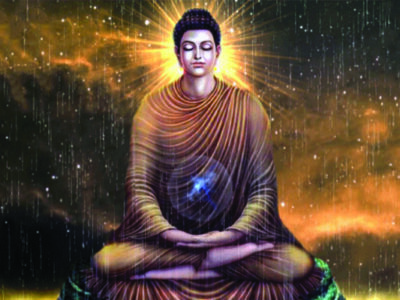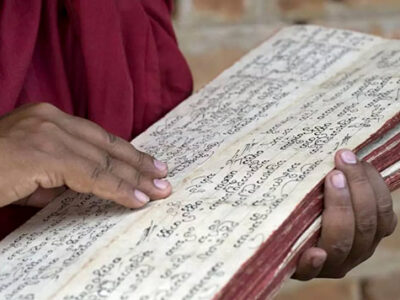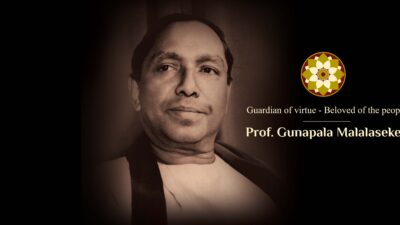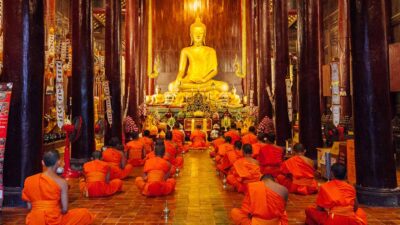Written by Prof.Dr. Dipankar Srijnan Barua
Professor and Ex.Chairman- Department of the Pali University of Chittagong. Bangladesh.
INTRODUCTION
Gautama Buddha, the greatest person of the world was born in India more than two thousand and five hundred years ago in the sixth century BC. He preached a new way of life which was later known as Buddhism. Buddhism is a realistic way of looking at life and by practising it, one can be happy and peaceful. The foundation of Buddhism is on logic and human intelligence. These teachings are timeless in how they’re useful then as well as now.
As a teacher, the Buddha made mankind think independently. He did not refer to any false assurance to allure or tempt them to follow him. Instead, he spoke about world realities and truths based on logic and reason and was against the superstition and blind beliefs. He did not encourage anyone to accept anything that was illogical.
The Buddha asked people not to follow any teachings (even his own) blindly, but to question everything. He asked the people not to follow something simply because other people were following it or because it was written in some scripture or just because some great men had spoken about it. He even went to the extent of saying not to follow the Buddha’s own words blindly but asked them to test what he spoke just as good goldsmith tests the gold to find out the purity of the gold. Once that is done, and then only should one accept the saying. After accepting one should not have any doubt whatsoever but practice it diligently.
The Buddha had full faith in practical insight which he had gained over years of practice and therefore his Dhamma was able to attract the general masses. The Buddha preached his doctrines for forty-five years. Later on, his teachings were compiled in the Tripitaka.
EQUALITY
During the time of the Buddha, religion and society experienced inequality or divisions because of caste differences. People from the lower caste were subjected to different hardships and difficulties by the people of the higher caste. People of the lower castes were not allowed to enter places of worship or pray to God and even the womenfolk were restricted from performing religious rites and rituals. They were not allowed to be recluses or saints. Only the higher caste Brahmins were entitled to become recluses. Sri Krishna in the Bhagavad Gita mentions that he is the highest amongst the four castes and that he has formed the four castes accordingly because different people possess different qualities and one is always different from the other and therefore he has decided to create a caste system.
“One does not become a Brahmin by birth nor by caste. One becomes a Brahmin by his deeds,” said the Buddha in opposition of the caste system.
He did not stay silent by merely preaching his opposition to the caste system, but invited people from all castes to see and embrace Buddhism. Even women were included in the Bhikkhuni Sangha. Everyone could practice the Dhamma regardless of their gender or caste. This created a revolutionary awareness in the history of mankind by giving equal status to everyone. The so-called untouchables, the suppressed and the repressed (dalitas) got respect as human beings. There was no caste or religious distinction and all got admission to the Buddhist Sangha. Suman, Gardner of the royal palace, the poor Brahmin Radha of Jetavana, the executioner or hangman Tambadathik, the hun
tsman Kukkutamitra, the dacoit Angulimala, the girl who made cotton-yarn in the palace of Aabhi, the fisherman of Sravasti, the dacoits of the jonnakuti caste, the barber Upali, the courtesan Amrapali, Empress Mahaprajapati, Bimbisara’s wife Khemadevi, the daughter of the cremator Prakriti, in one word all types of people in a society got a place in the Buddha’s Sangha. Buddhism was the first religion in India which offered such equality.
MORALITY
The Buddha did not accept the animal sacrifice, fire (Yajna) or any other form of external rites and rituals and therefore Buddhism can be termed as an ethical and moral system. Dr B.R. Ambedkar says “In fact, it can be said that the Buddha was the first teacher in the world who could free himself from these old beliefs and system when he made his Dhamma free from any form of rite or ritual,” Rites and rituals do not help one’s self-development.
The Buddha stressed more on the observation of morality or Sila and character building for ethical development. Without morality and good character, one cannot develop the mind. The Buddha says that living beings have the same kamma and all good and bad actions constitute kamma. One has to suffer according to one’s own kamma. Good kamma will beget good and bad kamma will beget bad fruits. Therefore, the Buddha stressed more on Sila for the general masses. Abstaining from killing living beings, stealing, illicit relationship, lying or false speech and intoxicants will help us purify ourselves through body, speech and mind and thus help accumulate good kamma and develop ethics in us. The ethical development is the development of the human facilities and this is the ultimate satisfaction of human life. These rules regarding ethics are acceptable to all mankind. With equality, man gets social, mental, economic and political freedom.
EDUCATIONAL SYSTEM
The Buddhist Monasteries and viharas are the main sources of the Indian educational system. These viharas were residential institutions where monks and novices practised Dhamma and Vinaya. Many years later, viharas became places of higher learning and converted to schools or institutions. Students from home and abroad started seeking admission to these universities to gain knowledge.
Also many learned and well-known teachers from far and wide started coming to these centres to teach and spread knowledge. Gradually these institutions started becoming bigger and extended their boundaries. Apart from monks and novices, there were lay people who were admitted to these schools and given opportunities to study there. There was no limit to the educational curriculum with Buddhist literature, Art, History, Philosophy, Science, Economics, Upanisada, Literature, Mathematics, Law, Vedas, Ayurveda, Astrology etc being taught there. Later, these schools turned to universities. According to Rabindranath Tagore, Universities first appeared in India. Nalanda, Vikramashila and Taxila were famous institutions of learning but no one was able to give an exact date regarding their foundation,
but it can be said that the advent of these universities was much before the Europian Universities came into existence.
Out of the Universities of Nalanda, Vikramashila, Taxila, Valabhi, Somapuri, Jagaddala, Odanatapuri etc, it was the University of Nalanda that was famous throughout the world. It is said that there were ten thousand students and more than one thousand Buddhist monks who were teachers. All such universities were residential and the teachers got no wages, but sustained on food and lodging only and the expenses to run these universities were borne by the Kings, merchants and landlords.
There were vast differences in the educational standards between the then prevailing ashrams run by Gurus and the universities run by the Buddhist monks. Similar to being admitted to the Sangha, education was imparted to all irrespective of caste, creed, colour, religion or country and thus it was able to acquire a universal character and this universality is possible only by the Buddhist Sangha because the example set by it was unmatched
before.
Their fame extended far and wide and their character was pure and faultless. They practice the Dhamma with great respect and dedication. Students from home and abroad had high regards for them. They inquired about their welfare to command such respect. The responsibility
was on the monks and they do this through their living standard, their unblemished character and meditation. All the teachers and professors were always aware of their character and work and therefore they were never shown any disrespect by the students. The Dhamma and lifestyle that was practised there was an ideal one and well-known throughout India and abroad. It was like a shining light that attracted respect from all. In short, the life span or longevity of Buddhism relied on these viharas
or universities.
As long as they could keep their image and ideals untainted so long Buddhism was alive. It can be said that the viharas and monasteries were centres of learning and cultural exchange and they played an important role in spreading Buddhism.
MISSIONARY WORK
Buddha himself was the founder of missionary work. We know that the Buddha after the first rainy retreat asked the monks to go from place to place and spread the Dhamma for the welfare of mankind. Since then all monks took part in missionary work. Later on the Kings, the rich merchants and landlord became followers of the Buddha and his Dhamma known as Buddhism and they patronized Buddhist missionary work which helps the speedy expansion of Buddhism. On one hand, there was the buddha’s magnetic personality, the difference from other religious nobleness and on the other hand there was the sangha’s pleasant character and realistic propagation which fascinated the people of India regardless of class or caste. Thousands of men and women took ordination in the sanghas. Buddhism attained universality in the 3rd century B.C. during the reign of King Asoka of the Mauryan dynasty. Nearly all parts of India, Kabul and the Hindukush Mountain were covered by Buddhism.
Emperor Asoka was horrified with the negative effects of the Kalinga war and was attracted to the gentleness of Buddhism. He embraced Buddhism and patronized it for expansion, propagation and development. Under his patronage, the third Buddhist council took place. At the end of the council, under his patronage and under the leadership of Moggaliputta Tissa some missions with Ganapuraka Bhikkhus were sent headed by the monks to the following countries. Majjantika Sthavir went to Kashmir and Ghandhara Mahadeva Sthavir to Mahisamandala. Rakkhita Sthavir to Vanavasi. Dhammarakkhita Sthavir to Aparantaka. Maharakkhita Sthavir to Maharastra. Majjhima Sthavir to Himavanta. Sona and Uttara Sthavir to Suvaranabhumi and Mahinda, Utthiya, Sambala and Bhadrasala Sthavir to Tamraparni (Sri Lanka).
These missions were quite successful in establishing Buddhism in these countries. Since then Buddhism came to be known as a universal religion. During the Kushana reign, King Kanishka also patronised Buddhism for its propagation. During his reign, Buddhist missions went to Middle Asia and China. Buddhism is practised in all these countries up to this date.
This was possible due to the patronage extended by the kings, merchants and landlords and above all the dedicated efforts of the sangha. The integration or united efforts of these people helped Buddhism attain universality where it is practised by half of the world’s population. This integration is the only reason for the propagation of Buddhism worldwide.
CONCLUSION
Once it was decided that Dhamma is hereditary. The son of a Brahmin who although immoral in character, could become a Brahmin and conduct all rituals but the son of a shudra or lower caste who had an unblemished moral character, was not allowed to perform any religious activity and was considered hateful in the society. Even today, this is being followed. Nowadays the wise intellects of the world don’t accept this kind of disparity. Many people of the world do not want dispute or violence. They want to live a happy and peaceful life. World organisations such as UNO, WFB, ABCP etc are established for the welfare of mankind.
The aim of these organisations is based on Buddha’s doctrine directly or indirectly. The precepts of Pancasila (ethical rules) are very practical, perfect and logical teachings advised by the Buddha.
In the above discussion, we find that non-violence, equality and
the missionary works followed by the different organisations, the modern education system, ethical propagation for human rights are influenced by Buddhism.



